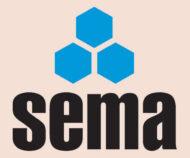Our first question this month asks for guidance with regard to the minimum distance between rows and the second enquires about Insurance Inspectors.
 Minimum Distance between Rows
Minimum Distance between Rows
Q. I would like to know if there is any regulation/guidance as to the minimum distance between rows of racking/shelving for safe walking, and retrieving of items (e.g. files) with respect to posture, manual handling, etc.?
A. If the aisle is part of an escape route then there will be a minimum aisle width and guidance is available in the documents accompanying the Building Regulations. For England & Wales Approved Document B2 gives a minimum width for an escape route of 750mm although a wider aisle could be required depending upon the number of people who might use the escape route and various other factors. If the aisle are part of an escape route you should get specialist guidance.
Wide aisles allow pickers to pass each other, which, for the same throughput, reduces congestion and might require fewer pickers than their narrow-aisle counterpart. However, the amount of space required for wide-aisle configurations is high. Narrow aisles utilise less space than wide aisles, but might be less efficient because of the increased likelihood of congestion experienced by pickers.
This does have some logic; if a shelving system for record filing was being designed where a single operator of the system was filing a few sheets of paper at a time then a fairly minimal dimension could be acceptable. Whereas if several people were required to operate the system at the same time and needed to pass each other in the aisle while perhaps pushing heavy trolleys then a different (and bigger) aisle width would be required. This would require more information on usage, dimensions of trolleys, etc.
In any picking operation the Manual Handling Operations Regulations are relevant. The employer must conduct a suitable and sufficient risk assessment and seek to reduce risks associated with manual handling. The regulations state that an employer must:
•Avoid the need for hazardous manual handling, so far as is reasonably practicable
•Assess the risk of injury from any manual handling task that cannot be avoided
•Reduce the risk of injury from manual handling, so far as is reasonably practicable.
There is some guidance on minimum requirements however the nature of the goods and pickers will influence the choice of aisle width.
Are Insurance Inspectors qualified to inspect our racking
Q. We have periodic inspections carried out by our insurance company on our racking. Does their inspector need to have a SEMA qualification to carry out these inspections? If not, what is ‘good practice’ with regard to qualifications?
A. The HSE publication “Warehousing and storage – A guide to health and safety” HSG76 states, in clauses 646 to 648, that “A technically competent person should carry out inspections at intervals of not more than 12 months” and that “A technically competent person might be a trained specialist within an organisation, a specialist from the rack supplier, or an independent qualified rack inspector” and that a “formal course is run to qualify expert inspectors under the SARI (SEMA approved rack inspector) scheme”. So, whilst there is no specific legal requirement for your inspector to have a SEMA qualification or any other qualification for that matter, you should make sure that the inspector is “technically competent”. The SEMA qualifications are one way that an inspector can demonstrate competence to an end user who maybe knows very little about the background, experience and training of the inspector, and that is one reason that the scheme was developed.
You might wish to discuss the qualifications and training of the particular Inspector that looks at your warehouse with your Insurer and might wish to engage a SEMA Approved Rack Inspector to look at your warehouse racking independently. In this circumstance, the Insurance Assessor could become the person who checks that the Rack Inspections have been done regularly and that any repairs are carried out rather than carrying out the rack inspections themselves.
SEMA Rack Safety Awareness Inspection Courses
SEMA runs a one-day safety course on Rack Safety Awareness and Inspection. These courses are aimed at end users, giving an in-depth look at the need for inspections, how to conduct an assessment and what actions to take when this is completed. These courses are held at the SEMA headquarters in Burntwood, Staffordshire, but arrangements can be made to hold them at the delegates’ premises.
SEMA Approved Rack Inspectors Qualification
This qualification is aimed at professionals who conduct rack surveys as an integral and significant part of their duties. It involves delegates in undertaking an in-depth SEMA Course, together with an examination and practical assessment. CPD will be an important part of the qualification, demonstrating to end users that SEMA Approved Inspectors maintain a high professional standard.
SEMA Publications
SEMA has 26 publications in stock – Codes of Practice, ‘Guides’ and European documents – all of which are available to purchase online. For further information on these documents contact SEMA or visit our website, www.sema.org.uk.
SEMA




Comments are closed.